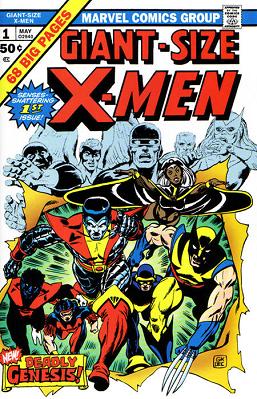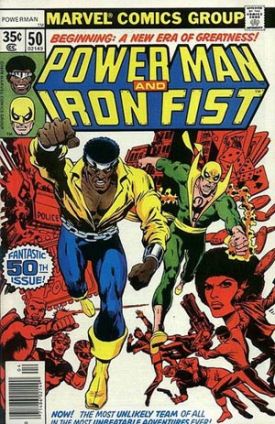Comics /
Spotlight /
Knowledge and Scholarship
Marvel History Part 3 - The 1970s
By Frederic Haddox
July 23, 2008 - 08:07
Despite the growth of Marvel Comics, superhero comic books were once again on the downside. Marvel Comics had to redirect their focus. This was first seen in the form of a barbarian by the name of Conan. The rendition of Robert E. Howard’s character was illustrated by a British artist named Barry Windsor-Smith. [2] Its success resulted in three other barbarian titles (including the female barbarian Red Sonja) by the end of the decade.
In 1971, Stan Lee was approached by the U.S. Department of Health, Education and Welfare to make a comic book about the negative effects of drug use. [1] In the aftermath of the turbulent 1960’s, drug use was on the rise in America. This would be the first time since the formation of the Comics Code that comic books would be used as a method of education. Although
Classic’s Illustrated, comic book renditions of classic novels, published reprints during the 1960’s, this would be a new step for the industry. The Spider-man story, not bearing the comic books code because it included drug use, was successful and gave Marvel Comics a little more freedom. [2]
The result was the release of two horror titles
Werewolf by Night and
Tomb of Dracula. This trend would continue with seven more titles (four in magazine format). [2] By 1972 Marvel’s sales were surpassing DC Comics. This success led to a failed attempt to buy DC Comics later that decade. [1]Also, Goodman retired and Stan Lee took his place as publisher.
In the cinema, a new movement was emerging that involved African American heroes who hustled, fought crime and took revenge on those that “kept them down.” Because of the low budget quality, lewd language and behavior and often repetitious storylines, many have labelled this movement “blaxploitation.” Amidst the growth of this movement, Marvel Comics released Luke Cage: Hero for Hire. Luke Cage, the first African American superhero, combated criminals in their urban element. Equally important to mention, is that many of the villains and background characters were also African American as well.
The early 1970’s also saw the explosive popularity of Kung Fu. Bruce Lee’s death in 1971 led much of the world to focus on films that involved this relatively unknown martial art. Marvel Comics took advantage of this trend with
The Deadly Hand’s of San Chi: Master of Kung Fu. This title led to another the creation of another character known as Iron Fist. Later Luke Cage (who would change his name to Power Man) and Iron Fist would join forces in their own title. Power Man and Iron Fist became the changed form of the Luke Cage title.
Marvel Comics released another Ghost Rider series in 1973. Although the original was a clever combination of a Western and Horror theme, this new one involved a motorcycle and a modern theme. Two major super heroes had their debut in 1974.
Amazing Spider-man #129 featured a hero known as the Punisher. In the spirit of Clint Eastwood and Charles Bronson, the Punisher was a vigilante embittered by a crime committed against his family.
Hulk #180 and 181 starred an obscure Canadian mutant named Wolverine. This superhero was unique in the fact that he was not only endowed with genetic power (super healing ability and heighten senses), but was physically altered as well. As a result of an operation, Wolverine’s body was laced with a fictitious, indestructible metal called adamantium. He was also given metal, retractable claws. Although his popularity was just beginning to grow, he would become a dominant, franchise figure by the end of the next decade.
Soon X-men would continue from issue #94 with Chris Claremont writing.
Giant Size X-Men #1 presented a new international group of mutants consisting of Wolverine, Colossus, Nightcrawler, Storm, Thunderhawk and Banshee. Colossus, a Russian farmer, could turn his body into steel. Nightcrawler, a German sideshow performer, had dexterity and could teleport short distances. Storm, an African weather witch, could control the weather. Thunderbird, a Native American Superhero, had superior strength. Banshee, an Irishman who first appeared in some early X-Men issues, had a supersonic scream. Along with Spider-man, these new X-Men would be the dominant, driving force behind Marvel Comics for the next 20 years.
References
1. ^Wikepedia, the free encylopedia: “Marvel Comics”
2. ^ www.chezcomics.com : “Marvel Comics History”
Last Updated: January 17, 2025 - 08:20

